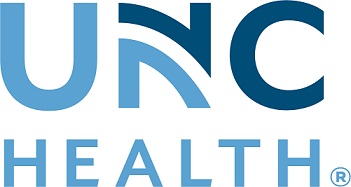For immediate use
New, more efficient cardiac monitor is improving the care of critically ill burn victims at UNC
LESLIE H. LANGUNC-CH School of Medicine
CHAPEL HILL - Doctors and nurses at the N.C. Jaycee Burn Center say a new, more efficient cardiac monitoring system is helping improve the care of critically ill patients.
The new PiCCO system (Pulsion Medical, Inc.) accurately and continuously monitors the heart's output of the critically ill without exposing them to the risks of having a catheter inserted into the pulmonary artery to obtain crucial cardiac readings.
The Burn Center at UNC Hospitals is among the first nationally to use the unique system in burn patients. The Food and Drug Administration approved it in May 2001.
The computerized system provides real-time readings of cardiac performance, including arterial blood pressure, heart rate and cardiac output, based on beat-to-beat signals, not averaged readings as is typically the case using current monitoring methods involving cardiac catheterization. The system also directly measures the amount of blood within the chest cavity for a more sensitive assessment of circulation status.
"In the day to day hospital care of critically ill burn victims, minute to minute decisions on care can make all the difference in the world. We're talking life versus death," said Bruce A. Cairns, M.D., an assistant professor of surgery specializing in trauma, critical care and burns at the University of North Carolina at Chapel Hill School of Medicine. "The accuracy and reliability of this system let's us more readily make intervention decisions that can be lifesaving."
The "us" Cairns referred to includes the unit's nursing staff. Their critically ill patients are attached to myriad wires and tubes strewn across the bed like spaghetti. Among these are intravenous lines for medication infusion and nutrition, ventilation tubing, and electrical leads fitted to boxes that record and visually display crucial components of cardiovascular function on a monitor.
According to Loree Farber, RN, nurse education clinician for the Burn Center, using older cardiac function monitoring technology calls for many more steps, including insertion of a wire through the pulmonary artery across the right side of the heart with the subsequent risk of artery damage and bloodstream infection. Risk of the latter is increased in the critically ill. Burn patients typically have a high bloodstream infection risk from catheterization.
"It also means bringing another box and more equipment into the room versus having one little module to stick into our monitor, which is less invasive and calls for less complicated steps," she said.
"The information is integrated on the screen and all you have is one wire and one box. With the PiCCO and its continuous numbers, physicians can just look at the monitor and get as much information as they need."
The PiCCO involves insertion of a very thin catheter into the femoral artery. The catheter is thin enough to use in children as small as 4.4 pounds. The system makes its calculations of cardiac output function based on information obtained from within the artery rather than having to float a catheter through the heart, as is done with the widely used Swann-Ganz catheter.
With standard cardiac monitoring systems, cool fluid (saline) is injected through the Swann-Ganz catheter. Temperature changes are calculated and entered into a formula, from which a representation of cardiac function is derived. "In combination with the blood pressure measurement, other calculations can be made to come up with a picture of the blood profusion in the body," Cairns explained. Thus, when doctors need more data, nurses must inject more fluid and derive new calculations.
"This newer arterial catheter [associated with PiCCO] is not floated through the heart and into the lung, the pulmonary venous system. It can measure temperature differences at the level of the artery rather than at the pulmonary arterial level. Therefore, with PiCCO, we can place an arterial catheter that functions almost identically as the Swann-Ganz catheter but without the risks. And the PiCCO module can let us observe real-time cardiac output changes, real-time cardiovascular and volumetric monitoring that's never been available before."
Farber noted another plus for PiCCO monitoring. "With our patients so slick and with all their dressings and burns, the pulmonary artery catheter could be inadvertently pulled out or pushed causing potential harm."
Timesaving is another factor in favor of the new monitoring system. Set-up time is much more simple and rapid, requiring less time for catheter placement compared with the Swann-Ganz.
"As recent tragic events have shown, burn care remains an essential health care resource," Cairns said. "Nursing care in the burn unit is one of the most if not the most demanding of critical care specialties. Technology that's easier to use, reliable and safer for patients while providing the information you need is always more desirable."
--30--
media note: contact Dr. Cairns at 919-966-0078, [email protected]
Contact Loree Farber at 919-966-3571, [email protected]
For Pulsion Medical, Inc. USA: 704-655-8844
Medical School contact: Leslie Lang, 919-843-9687, [email protected]
